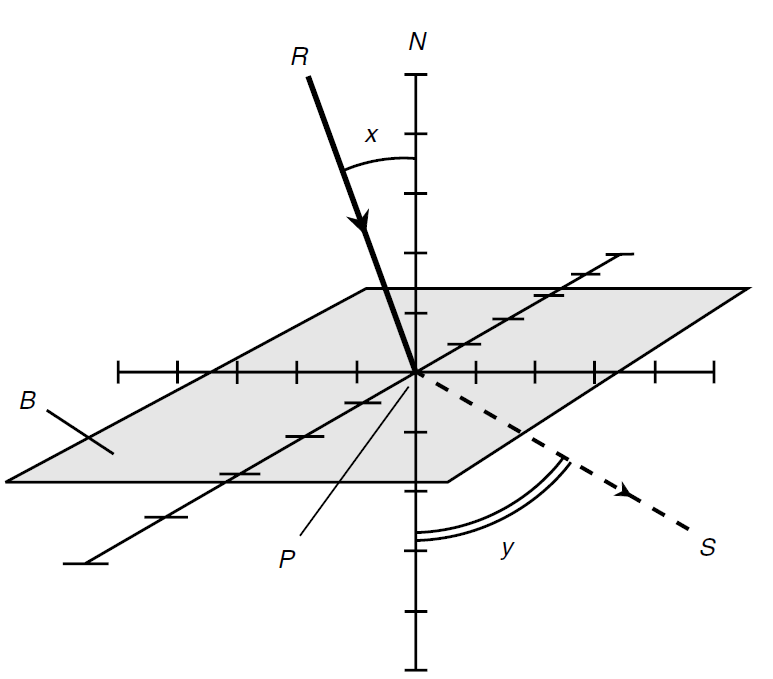
SNELL’S LAW
 المؤلف:
S. Gibilisco
المؤلف:
S. Gibilisco
 المصدر:
Physics Demystified
المصدر:
Physics Demystified
 الجزء والصفحة:
503
الجزء والصفحة:
503
 8-11-2020
8-11-2020
 3086
3086
SNELL’S LAW
When a ray of light encounters a boundary between two substances having different indices (or indexes) of refraction, the extent to which the ray is bent can be determined according to an equation called Snell’s law. Look at Fig. 1. Suppose that B is a flat boundary between two media Mr and Ms, whose indices of refraction are r and s, respectively. Imagine a ray of light crossing the boundary as shown. The ray is bent at the boundary whenever the ray does not strike at a right angle, assuming that the indices of refraction r and s are different.
Suppose that r < s; that is, the light passes from a medium having a relatively lower refractive index to a medium having a relatively higher refractive index. Let N be a line passing through some point P on B such that N is normal to B at P. Suppose that R is a ray of light traveling through Mr that strikes B at P. Let x be the angle that R subtends relative to N at P. Let S be the ray of light that emerges from P into Ms. Let y be the angle that S subtends relative to N at P. Then line N, ray R, and ray S all lie in the same

Fig. 1. A ray passing from a medium with a relatively lower refractive index to a medium with a relatively higher refractive index.
plane, and y < x. The two angles x and y are equal if, but only if, ray R strikes the boundary at an angle of incidence of 0°. The following equation holds for angles x and y in this situation:
sin y/sin x = r/s
This equation also can be expressed like this:
s sin y = r sin x
Now look at Fig. 2. Again, let B be a flat boundary between two media Mr and Ms whose absolute indices of refraction are r and s, respectively. In this case, imagine that r > s; that is, the ray passes from a medium having a relatively higher refractive index to a medium having a relatively lower refractive index. Let N, B, P, R, S, x, and y be defined as in the preceding example. As before, x = y if, but only if, ray R strikes B at an angle of incidence of 0°.
Then line N, ray R, and ray S all lie in the same plane, and x < y. Snell’s law holds in this case, just as in the situation described previously:

Fig. 2. A ray passing from a medium with a relatively higher refractive index to a medium with a relatively lower refractive index.
sin y/sin x = r/s and s sin y = r sin x
 الاكثر قراءة في الضوء
الاكثر قراءة في الضوء
 اخر الاخبار
اخر الاخبار
اخبار العتبة العباسية المقدسة


